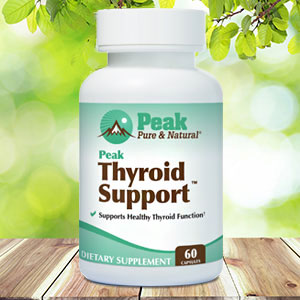Get Easy Health Digest™ in your inbox and don’t miss a thing when you subscribe today. Plus, get the free bonus report, Mother Nature’s Tips, Tricks and Remedies for Cholesterol, Blood Pressure & Blood Sugar as my way of saying welcome to the community!
A step closer to solving women’s autoimmune connection

Autoimmune diseases (AD) disproportionately affect the lives of women. They also take them. AD is among the top 10 causes of death for women under 65.
The exact reasons why women make up about 80 percent of the more than 24 million Americans afflicted with diseases like rheumatoid arthritis, celiac disease, multiple sclerosis, and especially lupus, have been unclear.
Science has posed many theories but no real explanations.
But Stanford researchers are hopeful they may finally have one that will lead to earlier detection and better therapies…
A ‘double trouble’ fail-safe that doesn’t always go as planned
There have been two long-held theories about why women are more prone to AD. Both involve chief differences among the sexes: hormones (estrogen and testosterone) and X chromosomes — of which women have two.
The latter theory is known as incomplete inactivation of immune-related genes on the X chromosome. This theory did not fully explain why women are more prone to autoimmune diseases — but has led to a third theory that just might…
Having two X chromosomes, as women do, creates a lethal risk: the production of twice the amount of myriad proteins specified by the X chromosomes. That’s why there is a fail-safe — the Xist gene.
When the gene is activated, Xist molecules coat long sections of one of the X chromosomes — cutting its output to practically zero. That leaves the other X chromosome to produce the RNA-encoded instructions cells need to work.
But in the process, some odd combinations of what’s called “collaborator proteins” and DNA can stick together, creating “complexes” that generate antibodies to a woman’s own tissues.
Dr. Howard Change, senior study author, realized that many of Xist’s collaborator proteins were known to be associated with AD and wondered might the X-chromosome inactivation be triggering the notoriously high rate of autoimmunity in women.
The answer? Yes, but not without help…
In experiments with female mice and bioengineered male mice, they saw that not just activation of Xist, but also some kind of tissue-damaging stress, like inflammation, is required “to get the autoimmunity ball rolling.” They also saw genetic background as a necessary player for autoimmunity to develop.
Screening that could detect AD before symptoms emerge
Autoantibody tests help identify antibodies targeting one’s own tissues or cells. There are several reasons these findings will greatly improve those screenings- — and one that’s rather surprising…
Close examination of blood samples from about 100 patients showed autoantibodies to many of the complexes associated with Xist. Some were specific to one or another autoimmune disorder and could help identify emerging disorders before symptoms were even seen.
Additional autoantibodies to Xist-associated proteins spanned several disorders, designating them as possible common markers of autoimmunity.
But this part may very well shock you, considering how skewed autoimmune diseases are to women — and how long that has been a known…
“Every cell in a woman’s body produces Xist,” Dr. Chang said. “But for several decades, we’ve used a male cell line as the standard of reference. That male cell line produced no Xist and no Xist/protein/DNA complexes, nor have other cells used since for the test. So, all of a female patient’s anti-Xist-complex antibodies — a huge source of women’s autoimmune susceptibility — go unseen.”
Symptoms, risks, VITAL supplements and diet
Right now it can take an average of 4.6 years to be properly diagnosed with an autoimmune disorder. Being aware of common symptoms and risks can help women advocate for themselves. Watch for:
- Fatigue
- Brain fog
- Joint pain and swelling
- Skin problems
- Abdominal pain or digestive issues
- Recurring fever
- Swollen glands
Risk factors include:
- Medications. Antibiotics and blood pressure medications can trigger drug-induced lupus. Statins can trigger myopathy. Always speak to a physician before stopping medications.
- Smoking is linked to lupus, rheumatoid arthritis, hyperthyroidism and MS.
- Already having one autoimmune disease.
- Exposure to mercury, aluminum, dioxin, pesticides, asbestos, trichloroethylene, and many other industrial and environmental toxins.
- Weight: Being overweight raises the risk of rheumatoid or psoriatic arthritis. Fat tissue makes substances that encourage inflammation. Extra weight may stress or damage joints.
- Infections.
Inflammation was central to a VITAL study that connected supplementing vitamin D and omega-3s with reducing the occurrence of AD by 25 to 30 percent.
“Given the benefits of vitamin D and omega-3s for reducing inflammation, we were particularly interested in whether they could protect against autoimmune diseases,” said JoAnn Manson, co-author and director of the VITAL trial at Brigham and Women’s Hospital in Boston.
Dousing inflammation is also the directive for the autoimmune protocol diet (AIP). AIP is an elimination diet that replaces certain foods known for being inflammatory triggers with nutrient-dense foods to improve gut health and hormone and immune system regulation.
Editor’s note: Did you know that when you take your body from acid to alkaline you can boost your energy, lose weight, soothe digestion, avoid illness and achieve wellness? Click here to discover The Alkaline Secret to Ultimate Vitality and revive your life today!
Sources:
Stanford Medicine-led study shows why women are at greater risk of autoimmune disease — Stanford Medicine
Stanford study could explain why women are more prone to autoimmune diseases — San Francisco Chronicle
Xist ribonucleoproteins promote female sex-biased autoimmunity — Cell
What Are Common Symptoms of Autoimmune Disease? — Johns Hopkins Medicine
Autoimmune diseases — Cleveland Clinic
Exposure to Environmental Toxins and Autoimmune Conditions — Integrative Medicine: A Clinician’s Journal














